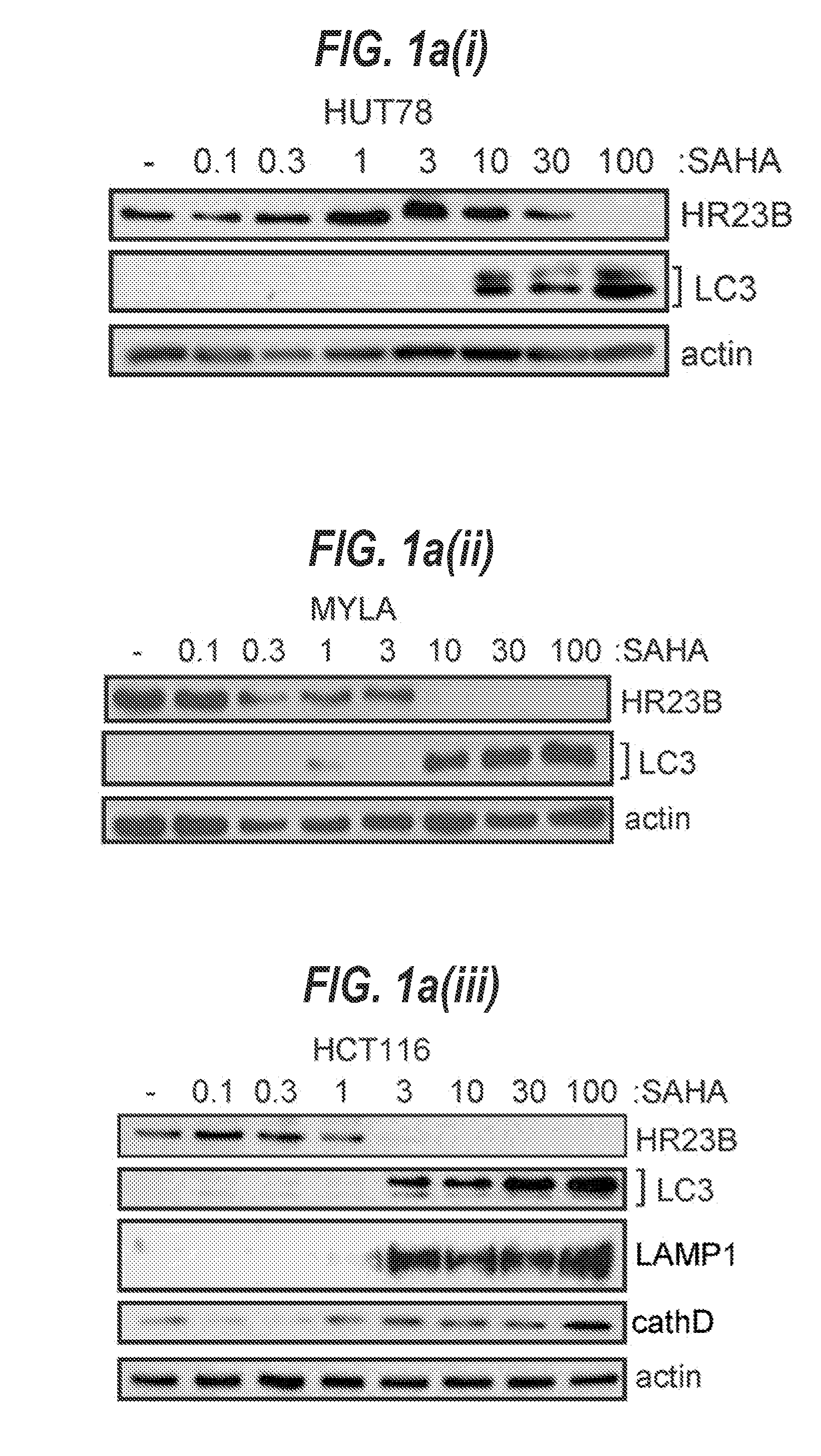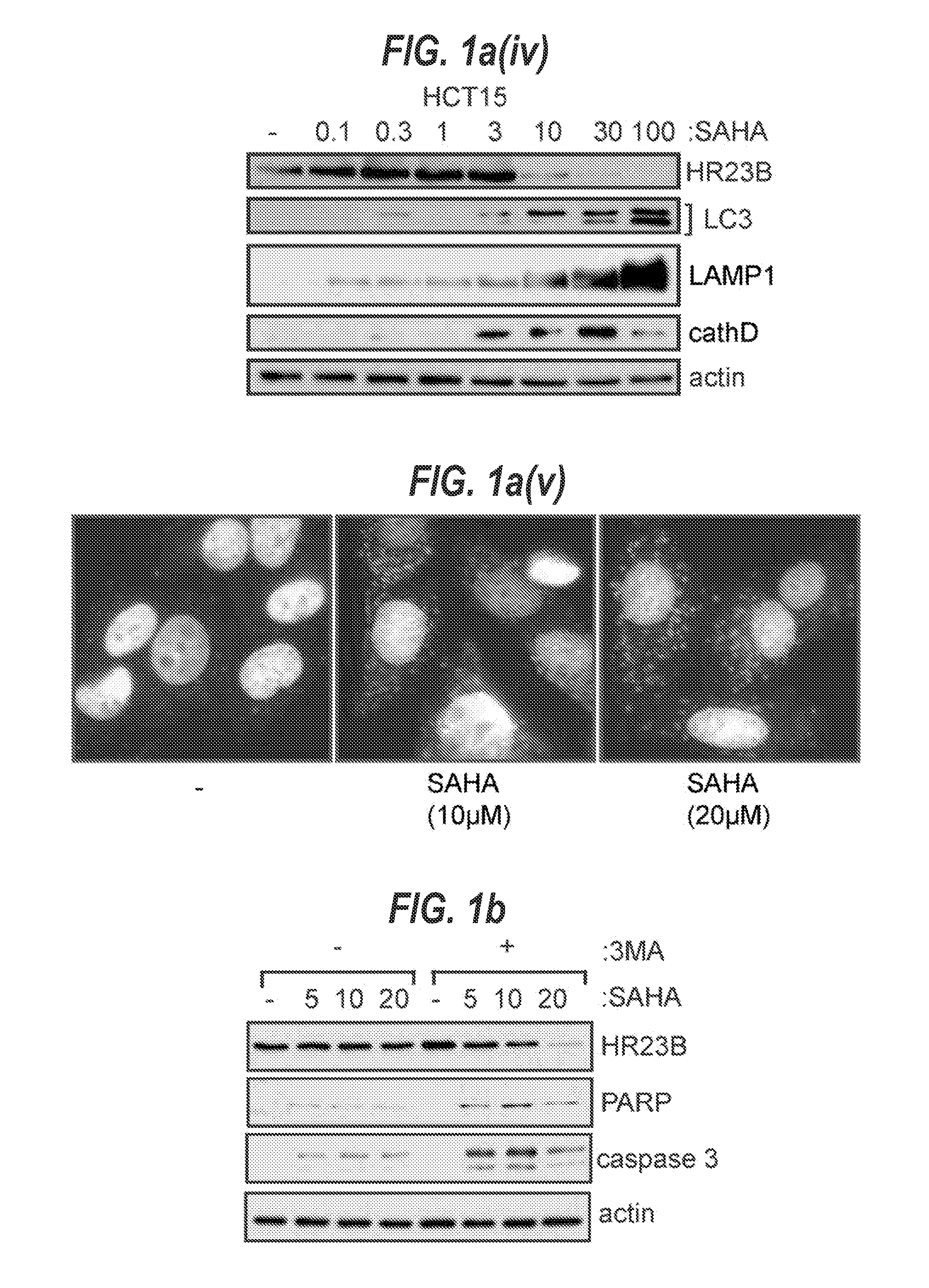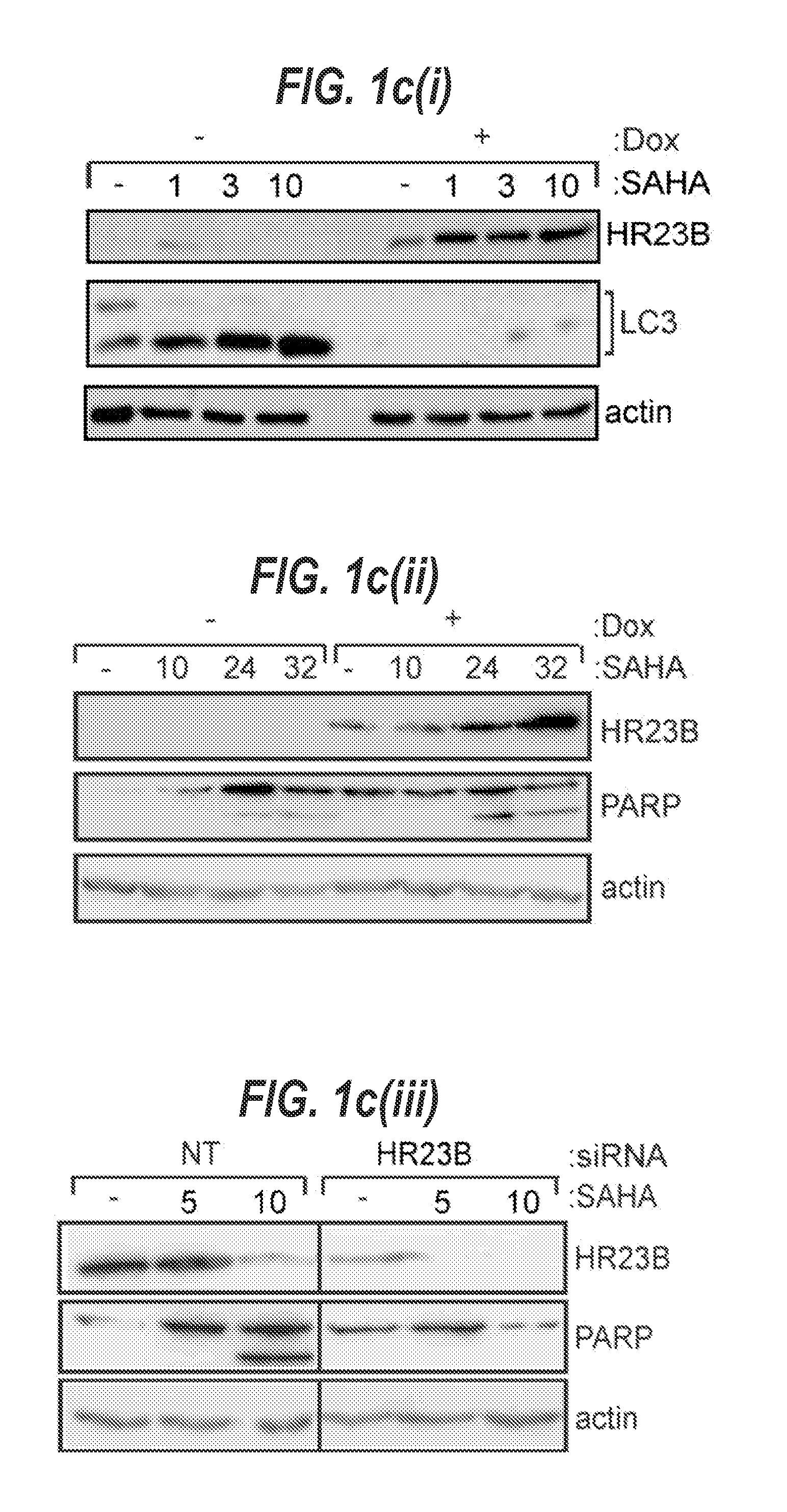Biomarkers for prognosis
a prognosis and biomarker technology, applied in the field of biomarkers for prognosis, can solve the problems of hdac inhibitors not being able to identify other malignancies and disease types that are likely to respond favourably to them, and achieve the effects of increasing the susceptibility of cells, decreasing the level of hdac6, and increasing the level of hr23b
- Summary
- Abstract
- Description
- Claims
- Application Information
AI Technical Summary
Benefits of technology
Problems solved by technology
Method used
Image
Examples
example 1
Materials and Methods
Cell Culture
[0203]Cells were cultured at 37° C. in a humidified 5% CO2 incubator in DMEM (Invitrogen) containing 10% FCS (U2OS, A2058, A375, HCT116, HCT15, WT and shRNA HDAC6 A549 cells), or RPMI containing 20% FCS (HUT78, MYLA). All media contained 1% penicillin / streptomycin (Invitrogen). U2OS-TET-Flag-HR23B and HDAC6 inducible cell lines were grown in DMEM containing 10% tetracycline-negative FCS (PAA Laboratories), hygromycin (Invitrogen), G418 (Promega) and 1% penicillin / streptomycin (Invitrogen). Flag-HR23B and Flag-HDAC6 was induced by the addition of 1 μg / ml doxycycline to culture media.
[0204]A U2OS-TET-Flag-HDAC6 inducible cell line was created by selecting cells transfected with Flag-HDAC6 inserted in a TET-ON gene expression system (Clontech). The shRNA A549 HDAC6 WT and KD cells were a kind gift from T. P. Yao (49).
Plasmids
[0205]pcDNA-Flag-HDAC6, ΔBUZ, ΔN (439-1215) and 1-503 were a kind gift from T. P. Yao (49). BUZ was amplified from wild-type pcDNA...
example 2
HR23B Influences Autophagy
[0216]The effect of HDAC inhibitor treatment on the level of markers for autophagy was evaluated in different cell types. The HDAC inhibitor SAHA caused LC3 cleavage as well as the appearance of LAMP1 and cathepsin D in diverse tumour cell lines, for example HUT78, MYLA (CTCL), A2058, A375 (melanoma), HCT116 and HCT15 (CRC; FIG. 1a and FIG. 6a to d). Treatment with other HDAC inhibitors, including valproic acid (VPA), resulted in similar effects (FIG. 1a and FIG. 6a to d), and the increase in autophagy markers coincided with the visual appearance of autophagosomes in cells (for example shown for SAHA; FIG. 1a, v).
[0217]Significantly, when cells were co-treated with the inhibitor of autophagy 3-methyladenine (3-MA); (21-23) and SAHA, an enhanced level of apoptosis was apparent (FIG. 1b), suggesting that under these experimental conditions apoptosis and autophagy are separate outcomes of HDAC inhibitor treatment. These results are consistent with previous rep...
example 3
HR23B Influences the Level of Ubiquitinated Proteins and Proteasome Activity
[0221]HR23B binds and shuttles ubiquitinated cargo proteins to the proteasome (13, 14), and proteasome targeting by HR23B is likely to be important for its role as an HDAC inhibitor sensitivity determinant (12, 16). This possibility was evaluated in greater detail by studying the level of global ubiquitination in HDAC inhibitor treated cells, and then the impact of HR23B on ubiquitination and directly on proteasome activity.
[0222]To pursue this line of investigation, His-tagged ubiquitin was expressed in transfected cells and the level of ubiquitin-conjugated proteins was assessed by immunoblotting with anti-His antibodies (24) under conditions of drug treatment that causes growth inhibition (12, 16). The global ubiquitination pattern that occurred in SAHA treated (for 20 hr) cells was similar to control untreated cells (FIG. 2a). An increase in ubiquitination was apparent when the ubiquitin proteasome syste...
PUM
| Property | Measurement | Unit |
|---|---|---|
| dissociation constant | aaaaa | aaaaa |
| dissociation constant | aaaaa | aaaaa |
| dissociation constant | aaaaa | aaaaa |
Abstract
Description
Claims
Application Information
 Login to View More
Login to View More - R&D
- Intellectual Property
- Life Sciences
- Materials
- Tech Scout
- Unparalleled Data Quality
- Higher Quality Content
- 60% Fewer Hallucinations
Browse by: Latest US Patents, China's latest patents, Technical Efficacy Thesaurus, Application Domain, Technology Topic, Popular Technical Reports.
© 2025 PatSnap. All rights reserved.Legal|Privacy policy|Modern Slavery Act Transparency Statement|Sitemap|About US| Contact US: help@patsnap.com



